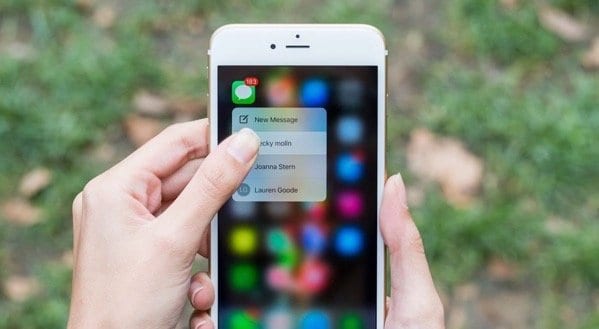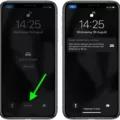Haptic feedback has become an integral part of our everyday interactions with technology, particularly on mobile devices. Whether it’s the subtle vibration when unlocking your phone or the satisfying tap when typing on a virtual keyboard, haptics aim to replicate the sensation of physical button presses.
On Android devices, haptics can be found throughout the system, enhancing the user experience. For instance, when unlocking your phone using the fingerprint reader, you may feel a tiny bump just before the home screen appears. This tactile feedback serves as a confirmation that your action was successful, providing a sense of satisfaction and reassurance.
The haptic feedback on Android devices is carefully designed to feel natural and unobtrusive. The taps or series of taps produced by haptic feedback can vary in sharpness or intensity, but they are typically subtle enough to seamlessly blend into the user’s interaction with the device. This attention to detail ensures that users can fully enjoy the benefits of haptic feedback without being distracted or annoyed by its presence.
Interestingly, disabling haptic feedback on your Android device may have a slight impact on battery life. By turning off haptic feedback, you reduce the power consumption associated with generating these vibrations. While the effect on battery life may not be significant, every little improvement can contribute to a longer-lasting device.
On the other hand, when it comes to iPhones, haptic feedback is an integral part of the user experience. It is not possible to disable haptic feedback without sacrificing other features as well. This is because haptic feedback plays a crucial role in providing tactile responses when interacting with different elements of the iPhone.
Apple is continuously researching ways to enhance the haptic feedback experience on their devices. One area of focus is making swiping across the iOS screen feel more tactile. By combining haptic feedback with visual feedback, Apple aims to make interacting with an iOS device more efficient and intuitive.
Haptic feedback has become an essential aspect of modern technology, enhancing our interactions with mobile devices. While some users may find it distracting or annoying, for many, haptic feedback adds a satisfying and realistic element to their user experience. As technology continues to evolve, we can expect further advancements in haptic feedback technology, making our interactions with devices even more immersive and intuitive.

What is Systems Haptics?
System haptics, also known as system-generated haptics, is a feature in Android devices that uses tactile feedback to enhance user experience. It involves the use of vibrations or haptic feedback to simulate the sensation of physical button presses or other interactions on the device’s touchscreen.
Here are some key points to understand about system haptics:
1. Tactile feedback: System haptics provide users with a tactile response when interacting with their device’s touchscreen. This feedback can mimic the feeling of pressing physical buttons, sliding switches, or other actions on the screen.
2. Haptic actuators: Android devices are equipped with haptic actuators, which are small motors or vibrating mechanisms integrated into the device. These actuators generate vibrations or movements that can be felt by the user when triggered.
3. Customizable vibration patterns: System haptics can be customized to create different vibration patterns for various interactions. For example, when typing on the virtual keyboard, each keypress can be accompanied by a subtle vibration, giving the user a sense of confirmation.
4. Feedback for system actions: System haptics can be used to provide feedback for system-level actions, such as unlocking the device, navigating through menus, or confirming a selection. This feedback helps users feel more engaged and provides reassurance that their interactions are registering.
5. Accessibility features: System haptics can also be beneficial for users with visual impairments or those who prefer tactile feedback. By providing vibrations or haptic responses, users can navigate the device and interact with apps more effectively.
6. Developer integration: Android provides developers with APIs (Application Programming Interfaces) to incorporate haptic feedback into their apps. This allows app developers to make use of system haptics to enhance the user experience within their applications.
System haptics in Android devices utilize vibrations or haptic feedback to simulate the sensation of physical button presses or interactions on the touchscreen. It enhances user experience by providing tactile feedback, custom vibration patterns, and system-level feedback for various actions. Developers can integrate haptic feedback into their apps using Android’s APIs.
What Happens If You Turn Off System Haptics?
When you turn off system haptics, it means that the tactile feedback feature on your device is disabled. System haptics provide a physical response to your interactions with the device, usually in the form of a tap or a series of taps. By turning it off, you will no longer feel these subtle vibrations or taps when you interact with the device.
Here are some key points to consider if you decide to turn off system haptics:
1. Lack of tactile feedback: With system haptics turned off, you won’t receive any physical response when you perform actions such as tapping on icons, buttons, or sliders on your device. This can make the user experience less engaging and might take away the sense of confirmation or satisfaction that haptic feedback provides.
2. Impact on usability: Haptic feedback is often used to enhance usability by providing important cues or alerts. For example, when typing on a virtual keyboard, haptics can simulate the feeling of pressing physical keys, making it easier to type without constantly looking at the screen. Without haptics, you might lose some accuracy or speed in your interactions.
3. Battery life: System haptics, although subtle, do require a certain amount of energy to function. By turning off haptics, you may experience a slightly longer battery life on your device since it no longer needs to power the vibration motor for haptic feedback.
4. Personal preference: Ultimately, the decision to turn off system haptics depends on personal preference. Some users may find the tactile feedback distracting or unnecessary, while others appreciate the added sensory experience it provides. If you find haptics bothersome or simply prefer a quieter experience, disabling system haptics might be the right choice for you.
Remember that turning off system haptics is reversible, and you can always re-enable them if you change your mind.
Should System Haptics Be On Or Off?
When it comes to the question of whether system haptics should be turned on or off on your iPhone, it ultimately depends on personal preference. System haptics refer to the vibrations and tactile feedback you feel when interacting with your iPhone’s user interface.
Some individuals find haptic feedback to be useful and enjoyable, as it provides a physical confirmation of actions such as button presses or scrolling. It can create a more immersive and interactive experience while using your device. Additionally, haptics can assist individuals with visual impairments by providing a tangible response to their actions.
On the other hand, some users may find haptic feedback to be distracting, annoying, or unnecessary. They may prefer a quieter and less tactile experience while using their iPhone. Disabling system haptics can also help conserve battery life, albeit to a small extent.
Unfortunately, there is no way to selectively disable haptic feedback on an iPhone without losing other features as well. If you decide to turn off system haptics, you will also lose haptic feedback for other functions like notifications, alarms, and certain app interactions.
Pros of turning system haptics on:
– Provides physical confirmation of actions
– Creates a more interactive and immersive experience
– Assists individuals with visual impairments
Cons of turning system haptics on:
– Can be distracting or annoying
– May not be necessary for some users
– Slightly affects battery life
Ultimately, the decision to turn system haptics on or off is subjective and depends on your personal preferences and needs. You can experiment with both settings to determine which option suits you best.
What Does Haptics Mean On Your iPhone?
Haptics on your iPhone refers to the tactile feedback that you experience when interacting with the device’s screen. It is the sensation of a tap or a quick vibration that you feel when you touch different elements on the screen or perform certain actions. This feedback enhances your user experience by providing a physical response to your touch, making it more engaging and intuitive.
The purpose of haptic feedback is to make your interactions with your iPhone more efficient and informative. By combining visual feedback with haptic feedback, Apple aims to create a more immersive and realistic user interface. For example, when you swipe across the screen, haptic feedback can be used to simulate the feeling of texture or resistance, making it feel as if you are physically moving objects on the screen.
By incorporating haptics into the iOS experience, Apple aims to make the user interface more accessible and intuitive, allowing users to navigate and interact with their devices more effectively. This technology is continually being researched and improved upon to provide users with a more seamless and satisfying user experience.
Haptics on your iPhone refers to the tactile feedback you feel when interacting with the screen. It enhances the user experience by providing physical sensations that correspond to your actions, making it more engaging and intuitive. Apple is constantly working on improving haptic feedback to make interactions with iOS devices more efficient and immersive.
Conclusion
System haptics play a significant role in enhancing the user experience on Android devices. By replicating the sensation of physical button presses, haptic feedback provides a tactile response that can make interactions with the device feel more natural and intuitive. From unlocking the phone with a fingerprint reader to navigating through different elements of the user interface, haptic feedback adds a subtle yet noticeable element of touch to the overall user experience.
While some users may find haptic feedback distracting or annoying, it is generally designed to be subtle and unobtrusive. The taps or series of taps can vary in sharpness and intensity, creating a personalized and responsive feedback system. Additionally, disabling haptic feedback on an iPhone may have a minor positive impact on battery life.
Apple is also exploring ways to improve the haptic feedback experience by researching how to make swiping across an iOS screen feel more tactile. By combining haptic feedback with visual feedback, Apple aims to make interactions with iOS devices more efficient and intuitive.
System haptics are an integral part of modern smartphone technology, enhancing the user experience and providing a more immersive and engaging interface. Whether you enjoy the tactile response or prefer to disable it, haptic feedback has become an important aspect of smartphone design and interaction.








